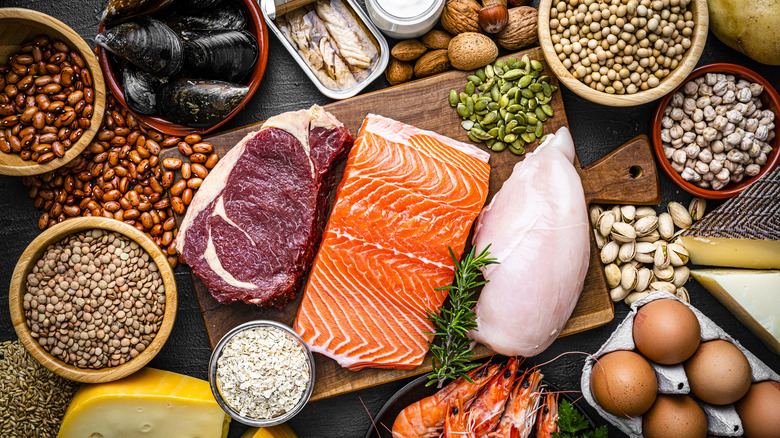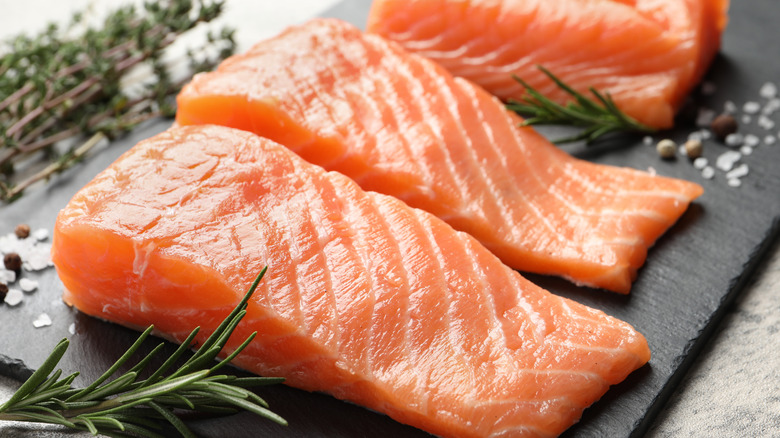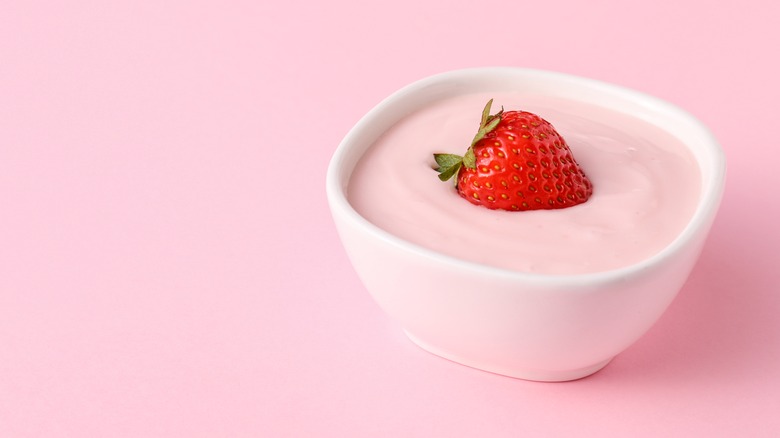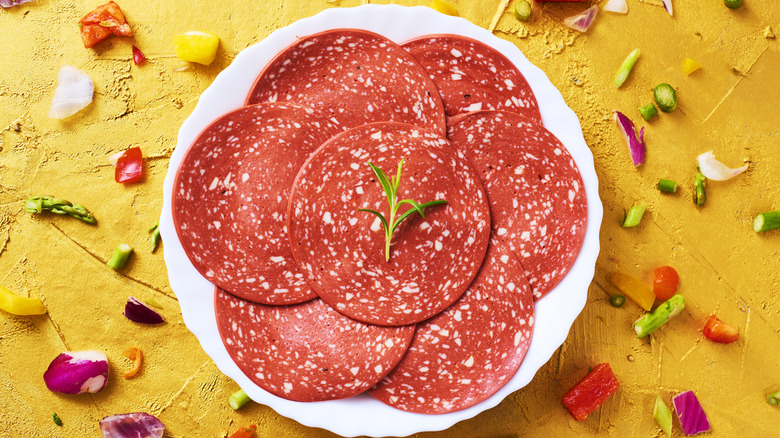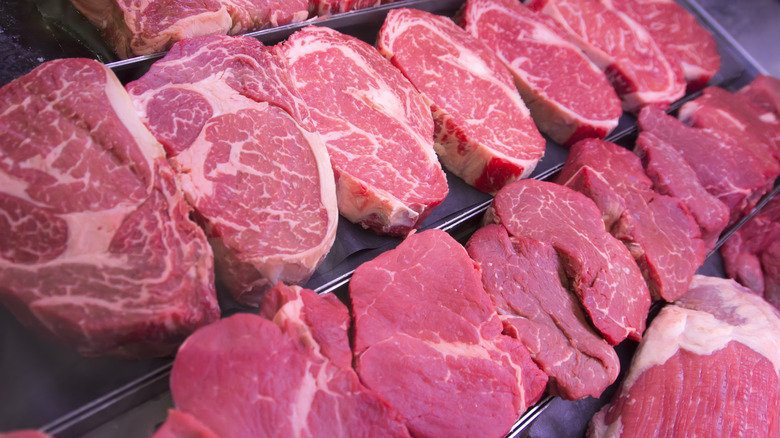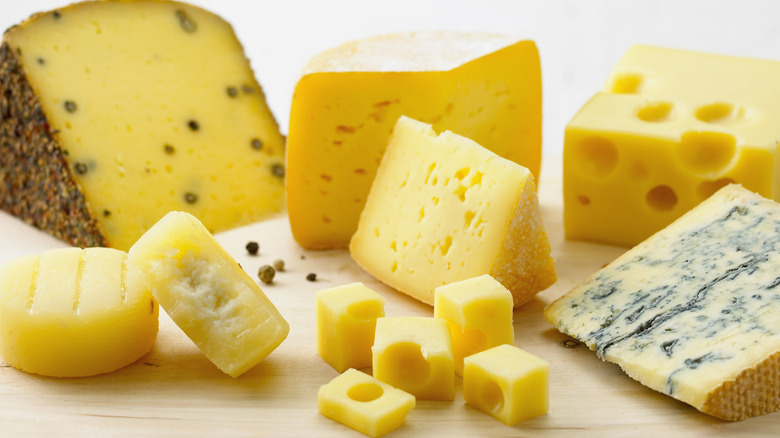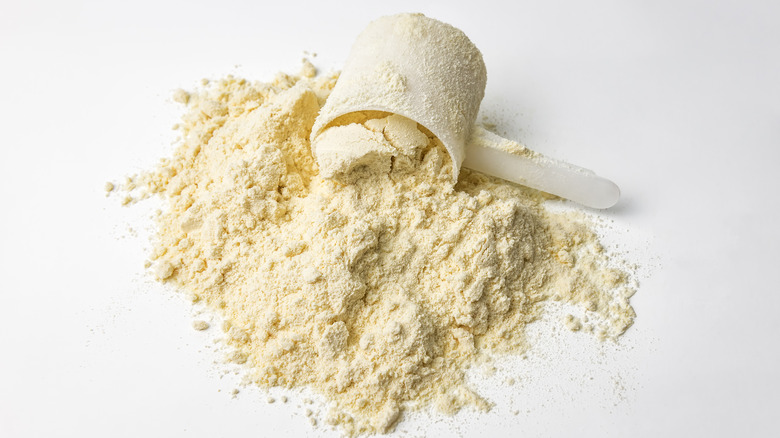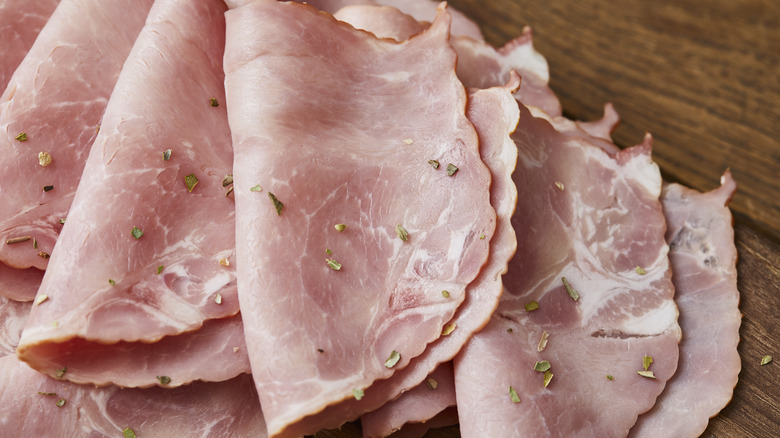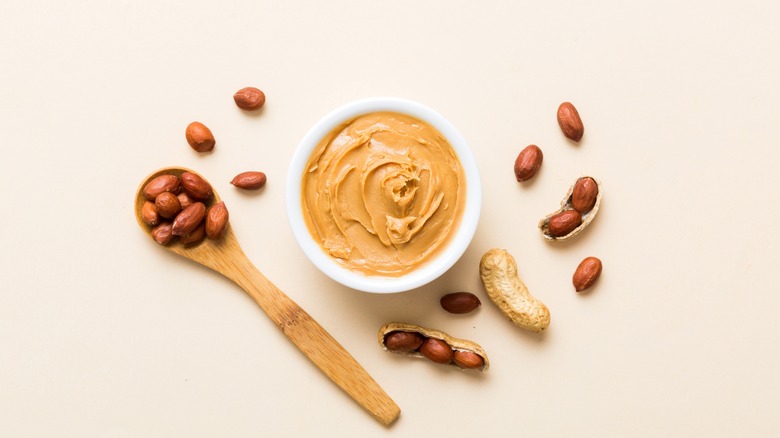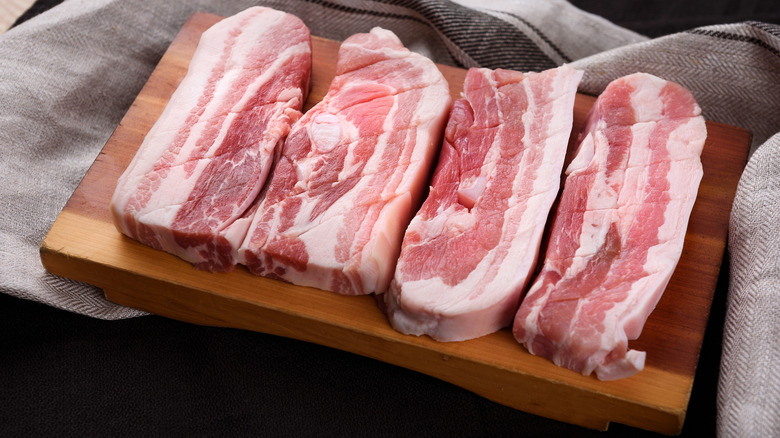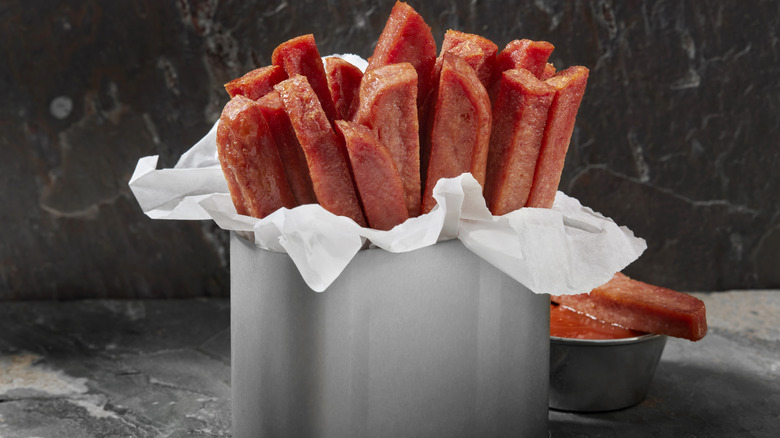14 Sources Of Protein You Might Want To Avoid
Protein is a fundamental nutrient and one our body needs a constant supply of. While dietary staples like chicken breasts, fish and seafood, beans and pulses, and tofu are all excellent sources of lean protein, others are not so great. Some of the most readily available protein sources on the market can be lacking in vitamins and minerals, pumped full of additional and unwanted nutrients, or heavily processed.
We usually associate protein intake with building strong muscles, but it underpins a staggering range of bodily functions and processes. According to the British Nutrition Foundation, we need protein to keep our organs in good working order and to make sure blood circulates around our system properly. Form Nutrition states that protein also serves as the building block for our hair and skin, plays an important role in sustaining a healthy immune system, and adds strength to our bones, both in childhood and in adulthood.
To remain healthy, it's recommended that we consume around 0.75 grams of protein per kilogram of body weight. But where our protein comes from is important. The best types of protein are those that supply quality, amino acid-rich nutrients without a huge amount of added fat, sugar, or sodium to ensure that we're achieving our protein needs without affecting a balanced diet.
1. Hot dogs
Hot dogs have to be one of the most convenient protein sources out there, and their moreish taste means that they're some people's go-to choice. But you definitely shouldn't rely on them. "The biggest concern with hot dogs is the presence of nitrates and nitrites, which are additives used to preserve and enhance the color of processed meats," explains registered dietitian Mary Sabat on USA Today. These nitrates and nitrites, Sabat says, can change structure when they're cooked or digested, resulting in further compounds called nitrosamines in the body that have been linked to a higher rate of some types of cancer.
What's more, food manufacturers who try to brand their hot dogs as "nitrate-free" or "all-natural" can often use celery juice as an ingredient, which is in itself rich in nitrates. And there's also the actual protein content of hot dogs to consider, which isn't actually that impressive or high compared to its other nutrients. In one Oscar Mayer Wiener, for example, there are just 5 grams of protein but almost 14 grams of fat and nearly 460 milligrams of sodium. You're far better off choosing an uncured, truly nitrate-free source that supplies high levels of protein without additional ingredients.
2. Farmed salmon
Salmon is a beloved and popular seafood choice. For pescatarians and seafood lovers, it's an ideal source of protein. The type of salmon you buy, though, will make a huge difference to its nutrition. There are two main types of fish available commercially: wild salmon and farmed salmon. Wild salmon tends to be much leaner and has more protein in comparison to its fat content, whereas farmed salmon can have higher levels of saturated fat due to their being fed more rigorously.
There are also some concerns about the other substances that can make their way into farmed salmon, like pollutants, contaminants, and antibiotics. There's a distinct lack of clarity around how much antibiotics are still used with farmed salmon, and although the situation has improved significantly in recent years, high levels can still be found in the fish. In terms of contaminants, a study published in Environmental Health Perspectives found that farmed salmon can contain levels of dioxins, which can be a highly toxic pollutant that poses a big risk to human health, according to the World Health Organization. There's no denying, though, that farmed salmon tends to be cheaper than wild salmon, so not everyone will have the option to choose the latter — but if you can, it's definitely a better option.
3. Sweetened yogurt
Yogurt is a valuable protein source, especially for people who don't eat meat. Certain types of yogurt, like Greek yogurt, have high levels of protein and an abundance of important nutrients like zinc, calcium, and vitamin B12. But yogurt has been seized on as a dessert food, and this has led to a massive selection of sweetened yogurts being available on the market today. Some of these yogurts, which are often marketed as "low-fat," can contain up to 20 grams of sugar per 100-gram pot.
It's worth pointing out that a lot of these flavored yogurts are marketed towards children and may contain candy like M&M's, which boost their sugar content even more. Importantly, too, many of these sugary options don't actually contain that much protein at all. One such option, YoCrunch Low Fat Vanilla Yogurt with Oreo pieces, has just 3 grams of protein per cup while supplying 11 grams of sugar. These yogurt options are also routinely additive-rich, containing ingredients like modified food starch and other thickeners or binders. While these ingredients are safe for consumption, they're just more things that get in the way of you and your protein.
4. Vegan deli meats
The market for plant-based meat products seems to be unstoppable. As well as plant-based food manufacturers mastering imitation meat products like vegan sausages, burger patties, and chicken pieces, they've also turned their hand to vegan deli meats. However, they're not exactly healthy. "Many meat-free alternatives are high in sodium and, in some cases, sugar," says registered dietitian Maggie Michalczyk, according to Men's Health. Some plant-based options, like Yves' Veggie Deli Bologna, have 480 milligrams of sodium per serving, approximately ⅕ of your daily recommended value in a 62-gram portion.
This sodium has several functions in these products. Not only does sodium help add flavor to the vegan meat product and allow it to imitate deli meat more effectively, but it also acts as a preservative. Michalczyk recommends searching for low-sodium choices and, where possible, trying to find vegan deli meat choices that are 400 milligrams of sodium or less per serving. Importantly, regular deli meat is also pretty high in sodium, so if you want a healthier, leaner protein source, you're better off skipping it entirely — whether you eat meat or not.
5. Grain-fed red meat
Red meat has been a controversial protein source for many years. Meats like beef and lamb have been an integral part of the human diet for many centuries, but high consumption of them has been found to increase the risk of certain types of chronic diseases, like diabetes and cardiovascular disease, according to Harvard Health Publishing. But if you're opting to eat red meat occasionally, there are smarter choices you can make — and it starts with avoiding grain-fed options.
"Grain-fed red meat is my least favorite source of protein, due to its high saturated fat content and impact on the environment," stresses registered dietitian Julia Zumpano, per the Cleveland Clinic. According to Jabeen Begum, MD, on WebMd, grain-fed animals have a higher-energy diet that has more fat sources in it, and this can lead to the animals becoming heavier. Instead of choosing grain-fed options, Zumpano recommends going for grass-fed meats instead. "They're lower in fat and research shows they contain 50% more omega-3 fats than conventionally fed animals." The World Cancer Research Fund International also advises you to try and limit your red meat portions to no more than three per week and to try and avoid processed meat wherever possible, as this can be more impactful on health than regular red meat.
6. Store-bought protein bars
Protein bars may offer a quick, convenient, and tasty way to boost your protein intake. But it's important to bear in mind that they're often full of additional ingredients that diminish their healthiness. "By and large, they're highly processed, high in sugar and salt — kind of a 'Frankenfood,'" says the University of Oregon's food studies program director and food historian Hannah Cutting-Jones, per the New York Times. Some protein bars can contain as much as 28 grams of added sugars, which is more than the maximum daily amount recommended for some by the American Heart Association.
Importantly, too, this sugar may come from high fructose corn syrup, one of the least healthy sources of sweetness, according to Healthline. On the sodium side, certain bars, like the Clif Builders Chocolate Peanut Butter flavor, contain hundreds of milligrams per serving. Depending on any additional ingredients added to the bars, they can also be high in saturated fat, too. Crucially, not all protein bars are made the same, and if you can find low-sugar, low-fat options, they can still provide a quick boost after your workout. But it's important not to become too reliant on this processed food as a source of protein, as doing so will provide you with a lot of unwanted, unnecessary ingredients.
7. Cheese
Approximately 22.17 million metric tons of cheese were produced in 2022 worldwide, according to Statista, so it's safe to say it's pretty popular. However, while cheese is delicious, affordable, and available in virtually every grocery store, you should probably not choose it as a primary protein source. The problem with cheese is that while it does have a good amount of protein, it also has high levels of saturated fat and sodium. These ingredients can somewhat cancel out the positive benefits of the protein levels and may prove risky in higher quantities for people who have cardiovascular conditions or high blood pressure, according to the Cleveland Clinic.
However, if you have a relatively balanced diet, you don't have to cut it out. "If your diet, in general, is very low in saturated fats and sodium, having two to three ounces of cheese a day may be safe," says registered dietitian Alexis Supan per Cleveland Clinic. It's also worth remembering that certain types of cheese may be lower in sodium and fat and, therefore, higher in overall protein than others. Options like cottage cheese can be pretty nutritionally balanced, and a choice like fresh mozzarella won't deliver too much sodium per portion.
8. Bratwurst
Sausages like bratwurst are flavor-rich, speedy protein choices that require little thought or effort. Unfortunately, this option typically comes with a price tag — a hefty dose of additional ingredients. Bratwurst "is typically high in fat as well as saturated fat" and "doesn't provide much nutrition in terms of protein due to that ratio," states registered dietitian Jordan Mazur via Men's Journal. One single bratwurst sausage can deliver 12 grams of protein, but alongside that, it also has 25 grams of fat and 8 ½ grams of saturated fat, as well as over 700 milligrams of sodium.
Consuming high levels of protein that come accompanied by high levels of saturated fat can pose some health risks. Folks who regularly consume elevated levels of both may be at a higher risk of colon cancer and heart disease, according to Harvard Health Publishing. This risk of heart disease is further exacerbated by consuming lots of sodium, which puts pressure on our veins and arteries, increasing cardiovascular strain, according to the British Heart Foundation. It's a good idea to limit how frequently you eat bratwurst and try to balance it with other adjustments to your diet.
9. Swordfish
If you're going for seafood, you might think that swordfish is a classy, high-protein choice. And in some respects, you'd be correct: Swordfish is abundant in protein, with 23 grams per 100-gram serving, and it's also high in heart-beneficial omega-3 fats. Regrettably, though, not all is as it seems. "As much as I want people to consume seafood at least twice a week to reap the omega-3 fatty acid benefits, I also want people to use caution when selecting their seafood choices as not all are created equal," says registered dietitian nutritionist Elizabeth Shaw per Eat This, Not That.
The issue with swordfish is that it has one of the highest mercury levels of any seafood. Swordfish has roughly 0.995 ppm of mercury on average, with some quantities reaching 3.22 ppm — for anyone wondering, that's a very high amount. For comparison's sake, shrimp has around 0.009 ppm. Eating too much swordfish, therefore, can significantly increase your risk of mercury poisoning, and symptoms include tremors, numbness, and loss of muscular function. The NHS advises that you limit your swordfish consumption to a maximum of one portion per week and that you limit it entirely if you're pregnant or trying for a baby. You should also avoid eating it alongside other high-mercury fish, like shark, marlin, or King mackerel.
10. Cheap protein powder
If you're looking to gain muscle or need to up your protein intake, protein powder can be seen as a quick solution. These powders supply a high amount of protein in a small, easily consumable serving size, and they're versatile enough to be used in recipes like protein pancakes or protein pudding, as well as on their own.
But there's one issue with cheaper protein powders, which is that they tend to be full of extra additives that somewhat negate their healthy qualities. Many protein powders have added sugar, which makes them tastier. However, this added sugar also increases their ability to spike your blood sugar, especially given that many don't have added fiber to counterbalance this. This combination of ingredients can lead to you ingesting a higher amount of calories than normal. While this might be useful if you're trying to build strength, it can also lead to weight gain, according to Prevention magazine.
Some protein powder products have also been found to contain levels of heavy metals, according to research published by Toxicology Reports. If you are consuming protein powder as part of your workout regimen or diet plan, make sure you're choosing brands that are as additive-free as possible and are regularly independently batch-tested for contaminants.
11. Deli meat
Few items promise a quick and easy hit of protein like deli meat does. Lunchtime staples like bologna, pepperoni, and salami have been around for decades and slot into a sandwich in mere seconds. But what might shock you is that deli meat isn't actually that good of a protein source because it doesn't really have that much in there. These meat items are actually pretty low in protein and, instead, provide the majority of their calories through fat.
A single serving of Oscar Mayer Bologna, for instance, weighs in at 28 grams and provides 80 calories. But only 3 grams are from protein, and it has more than double the weight in fat, with 7 grams per serving. Not only that, but deli slices tend to be made from the cheapest scraps of meat from the animal, which are highly processed and mechanically separated. These meats are also pumped full of preservatives and sodium to increase their flavor and shelf-life. If you need a quick fix of protein for lunch, it's a far smarter choice to make your own deli-style meat. Grab a joint of ham or turkey, cook it at home, and season it to your liking. You'll get far more protein per serving, and you won't have to worry about unwanted additives.
12. Some types of peanut butter
Peanut butter is often cited as a good protein source, and there's definitely some truth to this. In 2 tablespoons of regular peanut butter, there are 8 grams of protein, and the plant-based food item is also an excellent source of certain B vitamins, magnesium, copper, and manganese.
But because it's a popular snack food and beloved by kids and adults alike, peanut butter can often be amped up in flavor, leading to some surprisingly high levels of sugar and sodium. This tends to be most apparent in jars of peanut butter that combine flavors like peanut butter and grape jelly. In these products, a single serving can be incredibly high in added sugar — the extra sugar content can mean that you end up getting less protein for your buck.
Whenever possible, it's always a good idea to go for natural peanut butter. These types of peanut butter are usually just made from peanuts and peanuts alone and therefore are free of sodium and have no added sugar or fat. If you can't find a peanut butter that's just made of peanuts, try to pick an option that has the least additives. But remember, peanut butter is very high in fat, so it's probably a good idea not to use it as your sole protein source.
13. Pork belly
Few protein sources are as luxurious as pork belly — but that luxury comes at a cost. One of the reasons why pork belly is so rich-tasting and indulgent is because of its high-fat levels, resulting in health professionals urging caution. "While I would never say any food is off limits (you can find a place for everything you truly enjoy in a balanced diet), I'd recommend limiting consumption of pork belly for in just a 3-ounce portion you'll get 242 calories and 7 grams of saturated fat," says registered dietitian nutritionist Elizabeth Shaw, via Eat This, Not That.
That 7 grams can make up a high proportion of your maximum daily recommended intake, and you may only get 13 grams of protein in those 3 ounces. In the same weight of chicken breast, you'll get roughly double that amount. As pork belly is so high in fat, it's often prepared with high levels of sodium, which help to cut through its richness — but this can then raise other dietary issues. It's best to enjoy pork belly in moderation and go for leaner cuts of pork, like the tenderloin, to optimize your protein-to-fat ratio.
14. Spam
Few meat products hit the spot like Spam. The quintessential canned meat is a veritable staple in certain parts of the world and is versatile enough to be enjoyed at any time of the day. The issue with Spam, though, is that it doesn't have that much protein to begin with. For example, a single serving of Spam, weighing around 56 grams, has only 7 grams of protein. However, it has over double the amount of fat, with 15 grams in a comparatively small amount of food.
It's also worth remembering that Spam is considered a highly processed food, which limits its healthiness and means that it's pretty low in vitamins and minerals. Not to mention, it is also massively salty. A 2-ounce serving of Spam has almost ⅓ of your recommended daily intake of sodium. While this makes it taste all the better, it's important to remember that Spam should be eaten as a treat and not as one of your only sources of protein. Try to balance out your portions of this canned meat with servings of lean protein like chicken breast, lean pork cuts, and white fish.
